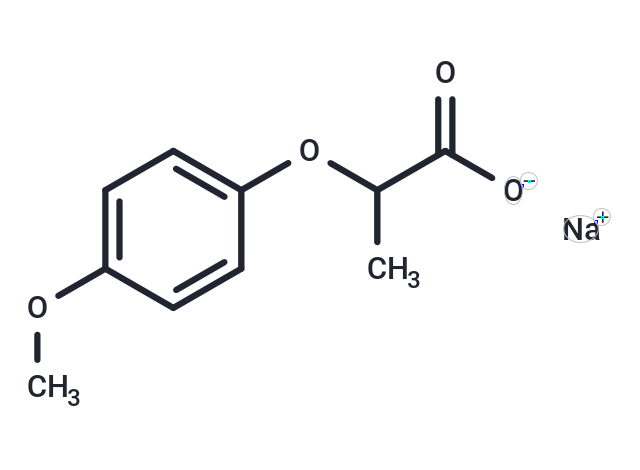Shopping Cart
- Remove All
 Your shopping cart is currently empty
Your shopping cart is currently empty

Lactisole (na-PMP) is an inhibitor of the glucose-sensing receptor

| Pack Size | Price | Availability | Quantity |
|---|---|---|---|
| 500 mg | $29 | In Stock | |
| 1 mL x 10 mM (in DMSO) | $33 | In Stock |
| Description | Lactisole (na-PMP) is an inhibitor of the glucose-sensing receptor |
| Targets&IC50 | Sweet taste receptor:∼4 mM |
| In vitro | In MIN6 cells, in a dose-dependent manner, lactisole inhibited insulin secretion induced by sweeteners, acesulfame-K, sucralose and glycyrrhizin. The IC50 was ~4 mmol/l. Lactisole attenuated the elevation of cytoplasmic Ca2+ concentration ([Ca2+]c) evoked by sucralose and acesulfame-K but did not affect the elevation of intracellular cAMP concentration ([cAMP]c) induced by these sweeteners. Lactisole also inhibited the action of glucose in MIN6 cells. Thus, lactisole significantly reduced elevations of intracellular [NADH] and intracellular [ATP] induced by glucose, and also inhibited glucose-induced insulin secretion[1]. |
| Alias | na-PMP |
| Molecular Weight | 218.18 |
| Formula | C10H11NaO4 |
| Cas No. | 150436-68-3 |
| Smiles | [Na+].COc1ccc(OC(C)C([O-])=O)cc1 |
| Relative Density. | no data available |
| Storage | Powder: -20°C for 3 years | In solvent: -80°C for 1 year | Shipping with blue ice. | |||||||||||||||||||||||||||||||||||||||||||||
| Solubility Information | Ethanol: 1 mg/mL (4.58 mM), Sonication is recommended. DMSO: 45 mg/mL (206.25 mM), Sonication is recommended. DMF: 20 mg/mL (91.67 mM), Sonication is recommended. | |||||||||||||||||||||||||||||||||||||||||||||
Solution Preparation Table | ||||||||||||||||||||||||||||||||||||||||||||||
Ethanol/DMF/DMSO
DMF/DMSO
DMSO
| ||||||||||||||||||||||||||||||||||||||||||||||

Copyright © 2015-2025 TargetMol Chemicals Inc. All Rights Reserved.